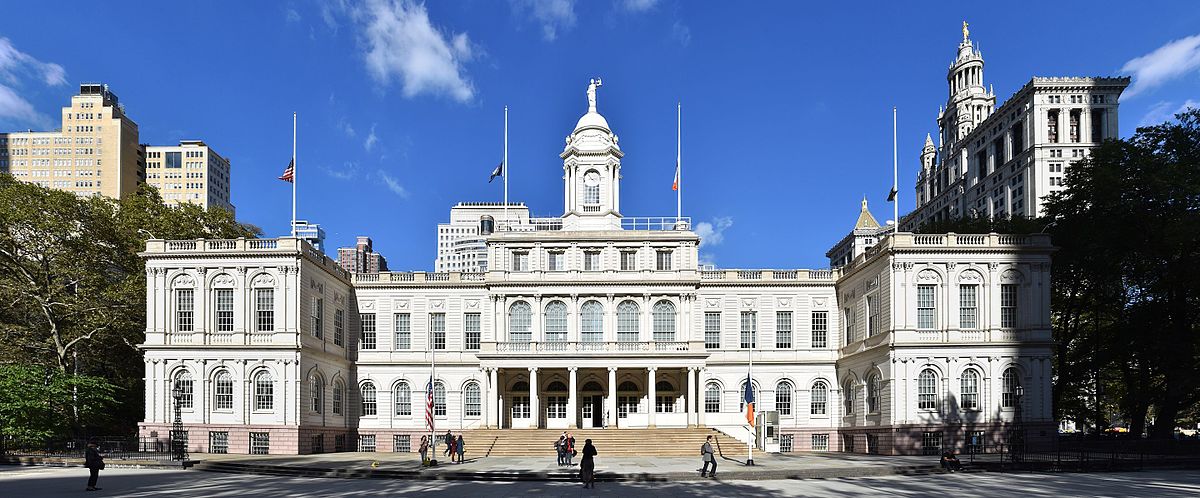To improve public services and increase efficiency, the New York City government must rethink the way it invests in its workers.
By Jackie Bein
The significant expansion of the city budget under the de Blasio administration should make New Yorkers question whether the municipal government is stewarding public dollars efficiently – particularly when it comes to one of the City’s largest expenses, the municipal employee payroll. The increase in the size of the city workforce, which currently consists of approximately 300,000 employees, is not just a reflection of the last administration. Historical data show that the municipal workforce has been growing since the 1980s, even as budget priorities and fiscal realities have shifted dramatically over the last four decades.
Mayor Eric Adams may break from the growth trend, having proposed a two-year municipal hiring freeze in the hopes of saving on labor costs (though so far, this does not appear to have been formalized into policy). Last year, as the city faced a fiscal crisis, some pointed to the increase of City worker headcount in addition to questionable salary raises and other payroll spending as a key reason for the City’s budget woes, which prompted de Blasio to push for billions in federal bailouts amid the uncertainty of the pandemic.
But has this massive expansion of the payroll actually helped the city government operate more effectively? Simply increasing headcounts at city agencies does not automatically improve the delivery of government services. What is troubling is the lack of innovation and forward-thinking policies to help foster a motivated workforce.
The statistics describing the expansion of city government in recent years masks a concerning trend, which is that many City agencies are currently having difficulty attracting and retaining talented workers. Budgetary concerns aside, this directly impacts the quality of services the City aims to provide for New Yorkers. Rather than continuing to expand the size of the municipal government, the City should start focusing more on continuing to recruit a quality workforce.
The question of how to maintain top talent in government jobs in order to provide New Yorkers with essential services, effectively deploy City capital for impactful infrastructure improvements, and carry out public programs that serve as lifelines to residents, is not new. And although the City benefits from the work of many employees who are drawn to public service for the mission, it can be challenging to justify the lower pay and many of the outdated policies that come with bureaucracy.
The latest iteration of the pandemic’s impact on the future of work has highlighted the City’s notable lack of flexibility. As the private and nonprofit sectors increasingly embrace hybrid, flexible work schedules, antiquated policies make the civil service look even less attractive than it did before. A 2019 Deloitte study on the future of the public sector workforce highlighted some of these issues, which have come to the forefront as the Covid-19 pandemic lingers on and organizations of all sectors have had to come to terms with how best to appeal to what their employees now prioritize in their workplaces.
In September 2021, all municipal workers were mandated to return to physical offices full time with less than two weeks’ notice, exacerbating the inflexible policies that have historically characterized city government at a time when flexibility is needed most. Agencies have already noted increasing attrition rates, largely among experienced workers with specific expertise that they can leverage for higher pay and more flexibility in the private and nonprofit sectors. This has only increased in recent weeks, when City Hall continued to be unresponsive to employee pleas to revisit the nonexistent telework policy amid the Omicron surge of the pandemic. Combined with the expected natural turnover as the city transitioned to a new mayoral administration, teams across many agencies have been decimated, headcount-wise. And the sloth-like process that it takes to hire workers new to City government makes it impossible to prevent prolonged delays in filling those gaps.
Many of the bureaucratic headaches that contribute to cumbersome, inflexible workplace policies are often viewed as an unfortunate, but unavoidable aspect of a career in public service. But it doesn’t have to be this way. In fact, offering more flexibility is a critical way for the City to signal to its workers that they are trusted and valued. Small policy changes can have high returns when it comes to motivating staff, resulting in higher-quality work. Yet for many government workers, being forced back into full-time, in person work has been incredibly demoralizing. This in turn has led to increasing numbers of employees voting with their feet, which could quickly lead to burnout and poorer-quality work from those who stay.
Retaining a talented workforce is one of the most important investments the City can make in itself. And for that to happen, HR policies need to be rethought; organization charts should be critically evaluated and revamped. HR departments across City agencies can and should adopt effective HR practices from the private sector, ranging from smoother onboarding and training opportunities to clearer, more user-friendly systems for navigating timesheets, flexible schedules, and remote work opportunities.
One way to improve hiring practices is by investing in a pipeline of talented workers. While the City does offer a range of internship and fellowship programs, not all are paid, and the paid opportunities offer low salaries, which discourages top talent and can present a major barrier for underrepresented candidates. Shifting City spending toward investing in a talent pipeline would help more agencies retain talented workers. This also creates opportunities to create more equitable access to government careers for all New Yorkers.
There are other ways the City can invest more intelligently in its workers. For one thing, City agencies can redirect payroll spending towards improving professional development and skill-building frameworks that help the existing workforce stay nimble and feel supported in their roles. This would help encourage employees to seek growth opportunities and allow the public sector to become a valuable way to grow one’s career. While a public sector job can’t offer the same perks offered by other industries like tech and finance, it’s worth thinking critically about how the City can capitalize on what it can offer, or what would be a good enough investment as a mechanism for attracting talent. Flexible remote-work options are one viable example. There is inherently no one-size-fits-all approach to making smarter investments in the City workforce. With government agencies tackling a wide range of work that involves differing levels of collaboration and varying scheduling needs, the path to cultivating a productive, efficient workforce will require much more than tweaking a budget spreadsheet. Regardless of the budgetary and political priorities of the new mayoral administration, all New Yorkers rely on the City’s ability to maintain a motivated workforce. Eric Adams should take a hard look at how the City invests in its talent.

Jackie Bein is a second year Master of Urban Planning student at NYU Wagner. Her interests include affordable housing development, municipal finance, and civic tech.




